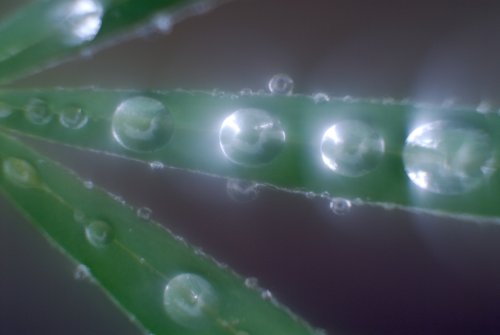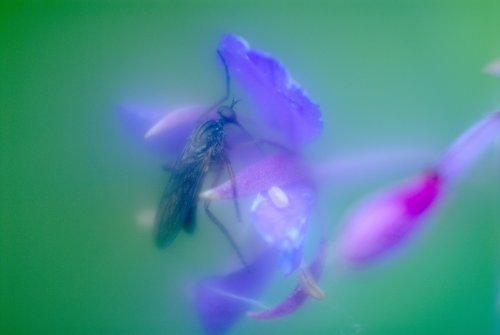
The lens looks rather massive, even on a D1X.
Bj°rn R°rslett's site, naturfotograf.com, is a great source of offbeat photographic ideas. One of those is the use of specialised (for instance, industrial, medical, or TV) lenses with extremely large apertures on an SLR. After reading his article "Need for Speed" over and over again, I bid on eBay for a De Oude Delft Rayxar E50/0,75 lens and actually won it with only some tens of euros.
Due to the aperture, the lens is rather hefty. It weights about a kilo, and has a front diameter of about 87mm.
As far as I know, the lens was used in X-ray machines, and the reason for the extremely large aperture was to minimise the radiation dose dealt to the patient, but otherwise there is almost no information on the net on this lens.
Naturally, this lens did not come in Nikon F-mount, so some adaptation was required. I don't know what the original mounting was, but Franšois du Toit mentions that with another Rayxar, 65/0.75, film was placed mere 0.8mm from the back of the lens (link); this is of course impossible on an SLR. There would be no possibility of infinity focus, but holding the lens by hand in front of the bayonet mount showed that close-up photography was certainly doable.
The lens came with a metal ring which screws into the back of the lens (the metal-coloured part in the picture below). I contacted a local metal shop, and requested them to modify the ring to have a T2 thread, so that a T2 - F adapter could be used. This was a simple operation and I got the lens back from the shop the next day.
 The lens looks rather massive, even on a D1X. |
As the lens does not have any sort of focusing mechanism, and infinity focus is not even remotely possible, the only way to use the lens is in close-up photography with a fixed magnification ratio and working distance. With the mounting I hard ordered, these work out to about 1:1.3 and about 10 cm from the front of the lens, respectively. However, the mounting is not perfect: the metal ring could be ground down several millimetres, to cut on the distance between the lens and the film plane, and this would lower the magnification ratio closer to 1:2, which would be more useful in my opinion. So, I may need to revisit the metal shop in the future, but the lens is fully usable as it is.
As the lens is used in a completely different setting from the one it was designed for, all sorts of aberrations appear. The 0,75 aperture leaves a paperthin plane of sharp focus, and there being no iris in the lens, it cannot be helped by stopping down. Sounds like lots of problems? However, that's exactly the point: these characteristics produce ethereal, dreamlike pictures which are unlike anything produced by normal lenses.
Enough talk, let's see some samples:
 |
 |
 |
 |
The results seem to be especially delicious when, as in the picture of thistles above, backlighting is combined with shiny water droplets. While this lens certainly isn't for general use, it certainly is a nice thing to play with, and perhaps something that opens up new ways to see images. Not everything needs to be sharp from top to bottom.
Copyright (c) Hannu Mallat < hmallat at gmail dot com > 2007. Last updated Aug 02, 2007.